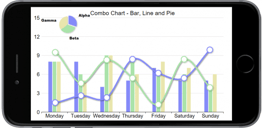Read what the pros say are key tips for designing mobile apps that engage users.
The key to building a successful mobile app is to engage its users as deeply as possible. And that means much more than using the right graphics, colors and screen design. It means re-thinking the mobile app from the ground up, putting the user at its center and taking advantage of mobile devices’ unique capabilities.
So says Daniel Yellin, Vice President, IBM Mobile Platform Dev and Israel Software Lab in his blog post, “How to incorporate user-led engagement in mobile app design.” Yellin puts it this way: “Mobile enables new types of interactions that necessitate rethinking the app experience. Instead of apps dictating when and how a user should accomplish a task, the app enables customers or employees to choose when and how to engage and can proactively guide users as they try to accomplish specific goals.”
What does that mean in practice? Yellin says the following three capabilities are key to designing truly engaging mobile apps.
Enterprise profiles. This is the term he uses for a profile the app uses to help determine the kind of information a user might be interested in at any given time. An enterprise profile combines demographic data about the user with information that can change moment by moment --- for example, what features in the app are currently being used. This profile, he says, “becomes the central source of information to segment different types of users and to customize their experiences.”
Cognitive services. These services allow a user to have a natural-language conversation with the app. Cognitive services use peoples’ profile data, along with their current actions, to determine what the user wants to do, and then suggest the best ways for him or her to do it.
Events. An event is something that gets sent from the app to the app’s cognitive services, which makes a decision on a recommendation to offer to the user, and then sends it to the apps. Here’s Yellin’s description of the process: “When an employee gets stalled in a task, it can trigger an event that feeds the current context (where the employee is stalled) and a profile snippet (how proficient the employee is in this task, as well as her preferences) to the cognitive engine. The cognitive engine decides how to aid the user and sends a message back to the device with a suggested resolution.”
Yellin concludes with this piece of advice: “When using these technologies, it’s important to never forget that the goal is to help users accomplish their tasks… Only apps that provide an engaging, cognitive and context-based experience will succeed in the market and with users.”
Designing apps that fully engage users require a development platform that lets you iterate quickly and focus on the app rather than on the code that creates it. Read how Alpha Anywhere can help you do that and speed mobile app development.








Comment